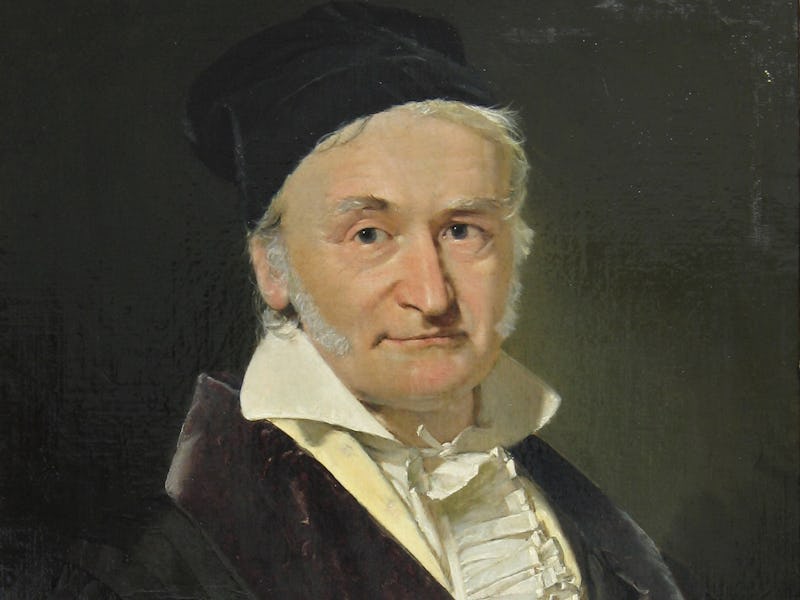How Math Prince Johann Carl Friedrich Gauß Startled Teachers at Age 7
He showed promise from an early age.

The world’s largest search engine paid tribute to a mathematical genius on Monday. Johann Carl Friedrich Gauß, a man known to some as the “prince of mathematics,” was commemorated with a Google Doodle on what would have been his 241st birthday.
The young Gauss, who was born in Brunswick in what is now Lower Saxony, Germany, showed strong promise from a very early age. When he was a student at St. Katherine’s Public School, at the age of seven, Gauss was asked by his teacher to add all the numbers from one to 100. After a few seconds, he reportedly came up with the correct answer of 5,050. Gauss reached the answer so fast by realizing that pairs of numbers from the start and end of the sequence equaled 101, so he could add one and 100, then two and 99, three and 98 and so on to reach the same answer. As there are 50 pairs in the sequence, the answer must be 50 multiplied by 101 or 5,050. It’s unclear whether the story definitely happened — a University of Cambridge resource says it “may not be entirely true” — but it serves as a fun story to demonstrate his natural approach to math.
Gauss Google Doodle.
Gauss’s genius didn’t stop there. He went on to study at Göttingen University in 1795, only to drop out and discover how to produce a 17-sided shape using only a ruler and compass, hailed as one of the biggest advancements since Greek times. The discovery broke the long-held belief that a ruler and compass could not make a shape with more than five sides, and it was so significant that Gauss requested the shape be carved onto his tombstone.
Gauss then calculated the orbit of Ceres, a small planet discovered in 1801, which later led to his 1809 book on the movement of celestial bodies. While he gradually developed an affinity for astronomy, he maintained an interest in other areas. Alongside Wilhelm Weber, he constructed the world’s first telegraph line, and he also built a special observatory to study the planet’s magnetic fields.
Gauss died in 1855, but his legacy endures. Gaussian Blur, which uses a Gaussian function to blur an image, is a popular method for creating user interface effects on modern computers. The Gauss Expedition, Germany’s first expedition to Antarctica in 1901, was also named after him.
It’s not the first time Google has paid tribute to a famous scientist. Previous doodles have paid tribute to Subrahmanyan Chandrasekhar, Jane Goodall, and NASA’s discovery of a multiplanetary system.